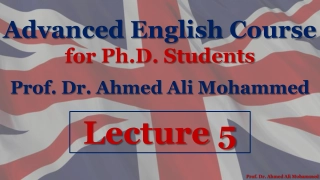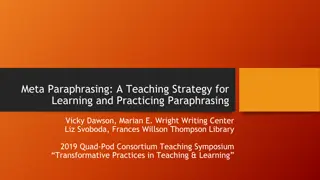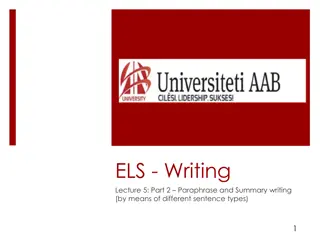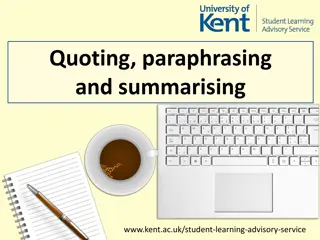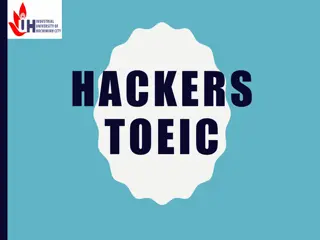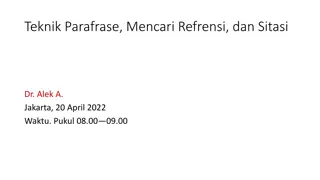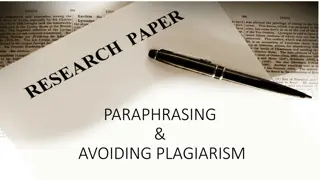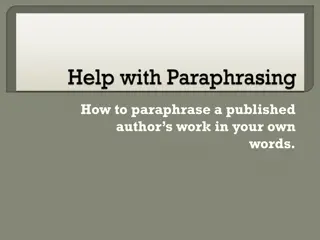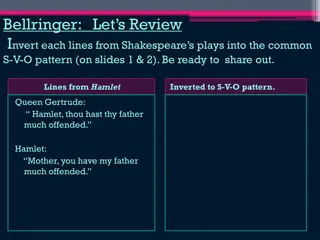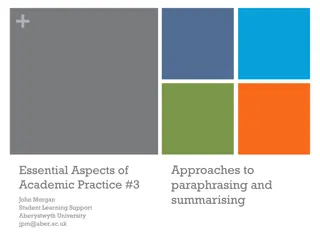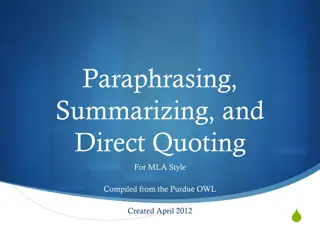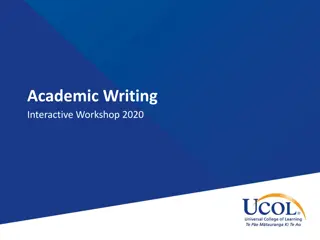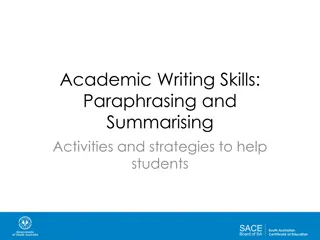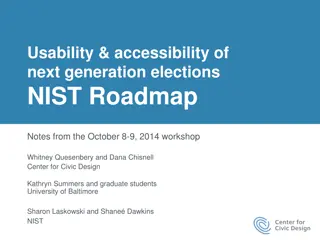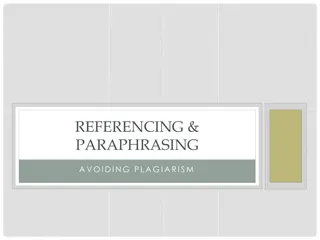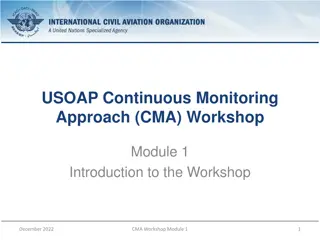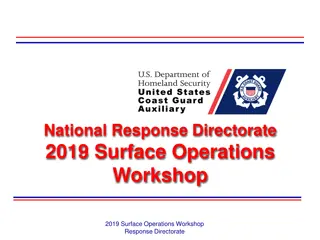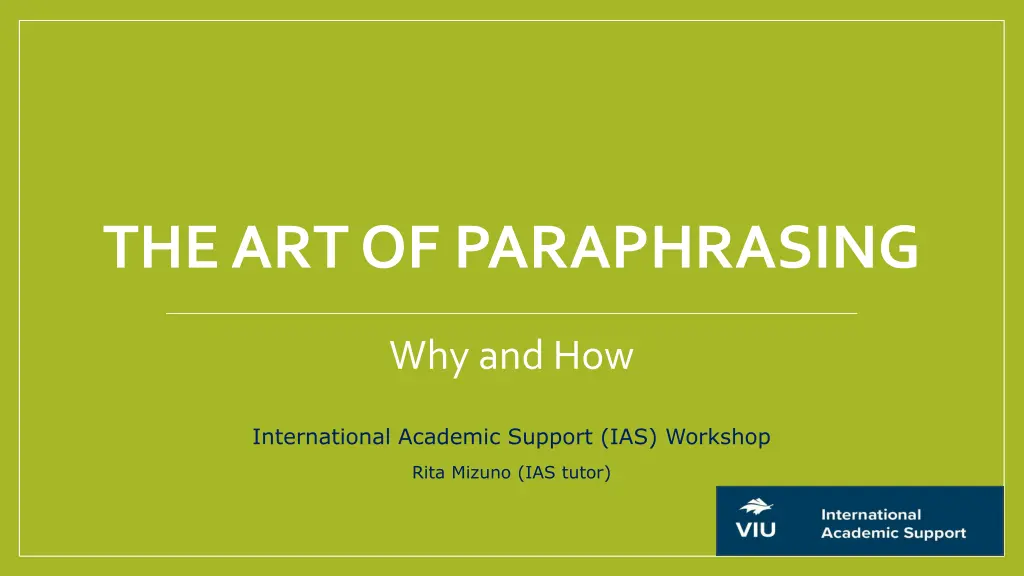
Mastering Source Usage: Paraphrasing, Citing, and Avoiding Plagiarism
Learn about the art of paraphrasing, referencing sources, and understanding the difference between plagiarism and intellectual honesty. Discover how to strengthen your arguments by utilizing external sources effectively without committing academic misconduct. Explore the nuances of quoting, paraphrasing, and summarizing to enhance the credibility of your writing.
Download Presentation

Please find below an Image/Link to download the presentation.
The content on the website is provided AS IS for your information and personal use only. It may not be sold, licensed, or shared on other websites without obtaining consent from the author. If you encounter any issues during the download, it is possible that the publisher has removed the file from their server.
You are allowed to download the files provided on this website for personal or commercial use, subject to the condition that they are used lawfully. All files are the property of their respective owners.
The content on the website is provided AS IS for your information and personal use only. It may not be sold, licensed, or shared on other websites without obtaining consent from the author.
E N D
Presentation Transcript
THE ART OF PARAPHRASING Why and How International Academic Support (IAS) Workshop Rita Mizuno (IAS tutor)
Are you familiar with these keywords? sources referencing (reference) citing (citation) What are the benefits of adding outside sources to your writing? John Hill, Writing Centre Coordinator, often says that your reader wants to know: How do you know that? Why should I believe you or agree with you? How can I find out more about that?
How about this keyword? plagiarism Using the words/thoughts of another as your own. From the Latin word, kidnapping. It is stealing intellectual property. It is a serious act of academic misconduct! You don thave to cite common knowledge, but you dohave to cite other people s intellectual property. Your reader needs to see the difference between your ideas and words and your source s ideas and words.
The challenge: How do you use sources to strengthen your arguments but not commit plagiarism? 1) Identify your source. 2) Focus on the source s ideas more than their words. 3) Paraphrase or summarize the source in a way that is very different from the original.
More keywords. How are they different? quote, paraphrase, and summarize (summary) Original [written by Tom Jones in 2015, on page 3]: The majority of the media are liars and anyone who blindly follows them is ignorant. Quote: Jones(2015) stated, The majority of the media are liars and anyone who blindly follows them is ignorant (p. 3). Paraphrase: According to Jones(2015),intelligent people should be aware that many journalists do not tell the truth. Summary: Jones(2015) argued it is foolish to completely trust the media.
Important noteabout summarizing vs. paraphrasing (by John Hill, the Writing Centre Coordinator) Don ts Paraphrasing is a useful linguistic skill, but it is not necessarily a useful intellectual one, for you or your reader. Simply to take another s sentence and then struggle to make it your own in an odd process of word substitution achieves little, and often results in a worse sentence that may even badly reflect some of thesubtleties of meaning in the original. authors supported their argument. If you cannot escape the form of the sentence you need, perhaps this is a time for a quotation. Do s Instead, read the text you are using with the goal of understanding it so that you can then explain or make sense of the original through meaningful (and useful) summary. Aim to produce your summarizing/ explanatory sentences from larger chunks of text than sentences: paragraphs, sections. You are effectively talking about your sources rather than talking through them. You are still citing their ideas as you explain them, however. Think about how you would talk to a friend about the work in question if they asked you what it was about and how the
How to identify your source Give the LAST name, DATE (year of publication) and, if quoting, page or paragraph number. APA prefers past tense reporting verbs. Use different verbs: stated, noted, pointed out, argued, emphasized, learned, found, determined, etc. Integral citations (author name part of the sentence): Jones (2021) said that interest rates had increased by 10%. Jones (2021) said, Interest rates rose by 10% (p. 4). According to Jones (2021), interest rates had increased by 10%. According to Jones (2021), Interest rates rose by 10% (para. 6). Non-integral citations (author name in brackets): Interest rates had increased by 10% (Jones, 2021). Interest rates rose by 10% (Jones, 2021, p. 4).
How about these keywords? synonym, antonym, and thesaurus synonym: words with the same meaning antonym: words with the opposite meaning thesaurus: a resource to find synonyms and antonyms of words e.g. https://www.thesaurus.com/
Paraphrasing/Summarizing Techniques Focus on the IDEA from your reference more than on the words. Read the source and take notes in your own words. Ask yourself questions about the ideas. In your own words, explainthe writer s idea without looking at the original.
3 Common Paraphrasing Techniques 1) Use synonyms or antonyms (use your own words/words that you know!) George is incredibly chivalrousto exquisitemembers of the opposite sex. George is very polite to prettygirls. George is never rude to pretty girls. 2) Change word forms She is full of energy! She is energetic! (noun -> adjective) He teaches my class. He is my class teacher. (verb -> noun) That movie threw me into a state of depression. That movie depressed me. (prepositional phrase -> verb) The storm caused a lot of damage to the property. The storm caused a lot of property damage. (prepositional phrase -> adjective phrase)
Technique #3 (most important!!!!) 3) Change sentence structure: clauses, phrases, voice, order, length The act of carelessly discarding one lighted cigarette in the forest started the largest fire that had ever occurred in that region resulting in the destruction of hundreds of homes. The act of carelessly discarding one lighted cigarette in the forest started the largest fire that had ever occurred in that region resulting in the destruction of hundreds of homes. The worst forest fire in the history of that region was started by a single cigarette someone dropped. Due to this thoughtlessness, hundreds of homes were destroyed.
Using the sources original words Sometimes, you may want to keep quote the original words from your reference when the wording is special and will add a greater impact to your paper than normal expressions would. For example: American civil rights leader, Dr. Martin Luther King, Jr. (1965) said, The function of education is to teach one to think intensively and to think critically. Intelligence plus character that is the goal of true education (p. 2). You could paraphrase his ideabut keep the interesting expression, intelligence plus character with a blend of paraphrasing and quoting: Dr. Martin Luther King, Jr. (1965) noted that educators should train students to think deeply so that they develop intelligence plus character (p. 2).
Practice Summarizing Read the original source, then answer the questions about the story. Smith, E. (2015). The power of positive thinking. Journal of Applied Developmental Psychology, 30(5), 22. https://doi.org/11.1017/j.appdev.2015.05.005 Some people can stay happy even under stressful circumstances. One of my co-workers, Mr. Johnson, is a good example of this type of person. He always seems to take a positive view toward life. I recall one incident in particular that illustrates this point. Johnson told me he usually gets up at 6:30, but one day he woke up, looked at his alarm clock, and was shocked to see that it was already 7:30! He said he must have forgotten to set it the night before and had overslept. He jumped out of bed, washed up, shaved, and got dressed quickly. He was hungry, but there was no time for breakfast. He ran all the way to the station and was able to board the next train. Fortunately, he arrived at the company by the 9:00 start time. He said good morning to his fellow workers and stopped by the staff kitchen to make himself a cup of coffee, nice and hot. He recalled that it smelled so good. Then, he made his way over to his office, sat down, and put his head on this desk. In less than a minute, he was snoring and starting to enjoy a very pleasant dream. He later told me his dream was about having a nice breakfast at his favourite coffee shop and that when he woke up, he wasn t hungry anymore, but was energized and he had had a very productive day after all! He is a classic case of the positive thinker who refuses to dwell on the negative, who effortlessly turns lemons into lemonade.
Answer these questions in full sentences 1. Did the man wake up early or late this morning? 7. What did he make and where did he go? 2. How did he get ready for work, quickly or slowly? 8. Where did he immediately fall asleep? 3. Did he run or walk to the train station? 9. What did he later say he had been dreaming about eating? 4. Did he catch his train? 10. How did he feel when he woke up and 5. Did he make it to work on time or was he late? how was the rest of his day after that? 6. Did he greet his co-workers?
Summary of the Story Smith, E. (2015) argued that a positive attitude makes a big difference in how people cope with stress. He gave an example with a story about one of his co-workers: One day, the man woke up late and quickly got ready for work. He ran to the train station and caught his train. He made it to work on time and greeted his co-workers cheerfully. He made a cup of coffee, went to his office, and immediately fell asleep at his desk. He later said he had been dreaming of eating the breakfast he had missed and that he woke up refreshed and ready to work! Smith concluded that this positive attitude is what makes it possible for people to turn lemons into lemonade (p. 22).
In Conclusion Don t just change words/word forms but make sure you also change the sentence structure so your sentence looks completely different from the original. Poor paraphrasing is a form of plagiarism. Good and bad examples of paraphrasing https://academicguides.waldenu.edu/writingcenter/evidence/paraphrase/examples https://www.lib.uwo.ca/tutorials/paraphrasing/index.html https://www.muhlenberg.edu/academics/psychology/studentportal/inappropriateparaphrasing/ https://eltc-language-resources.group.shef.ac.uk/lessons/identifying-good-and-bad-paraphrases/ [students to do after the WS] Even better, summarize rather than just paraphrase. Focus on the ideas, not the words. Remember the purpose for citing a source in your paper. An authoritative source adds strength to your claim but only when you use YOUR words to support YOUR ideas.
The Writing Centre and IAS share an appointment system.
Step 1: Choose TUTOR TYPE: a tutorsare VIU professors b tutorsare International Academic Support (IAS) tutors who have training in ESL Both types of tutors can assist any student with their academic writing, but b (IAS) tutors can further support students with English language learning issues. Step 2: ChooseONE of 3 TUTORING MODES: 1. F2F= Face-to-face (in person) tutoring in the Writing Centre, 4thfloor of the VIU Library 2. Online: you will be given TWO options: appointment box). Videochat(meet live online, like Skyping, accessed by clicking on the specific about what you would like feedback on. Provide prof s assignment details if possible). etutoring(attach a Word document(notPDF) to receive email feedback; be
Thanks, eh? Your IAS team Your IAS team (Rita & Kate) + the other Writing Centre tutors Centre tutors Writing look forward to working with you! + Workshop feedback + Questions? rita.mizuno@viu.ca rita.mizuno@viu.ca + https:// www.viu.ca/ ias https:// www.viu.ca/ ias

